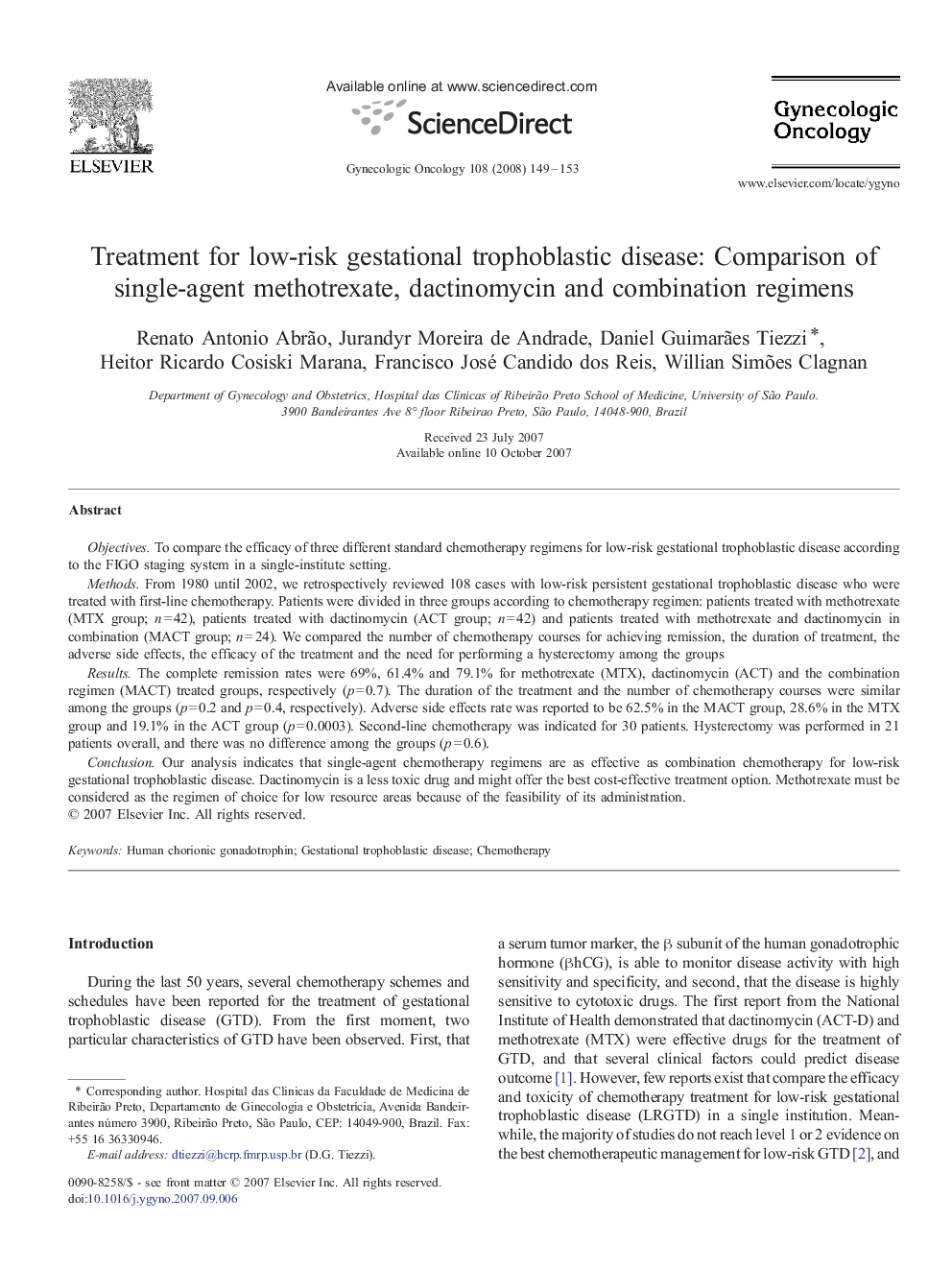| Article ID | Journal | Published Year | Pages | File Type |
|---|---|---|---|---|
| 3943389 | Gynecologic Oncology | 2008 | 5 Pages |
ObjectivesTo compare the efficacy of three different standard chemotherapy regimens for low-risk gestational trophoblastic disease according to the FIGO staging system in a single-institute setting.MethodsFrom 1980 until 2002, we retrospectively reviewed 108 cases with low-risk persistent gestational trophoblastic disease who were treated with first-line chemotherapy. Patients were divided in three groups according to chemotherapy regimen: patients treated with methotrexate (MTX group; n = 42), patients treated with dactinomycin (ACT group; n = 42) and patients treated with methotrexate and dactinomycin in combination (MACT group; n = 24). We compared the number of chemotherapy courses for achieving remission, the duration of treatment, the adverse side effects, the efficacy of the treatment and the need for performing a hysterectomy among the groupsResultsThe complete remission rates were 69%, 61.4% and 79.1% for methotrexate (MTX), dactinomycin (ACT) and the combination regimen (MACT) treated groups, respectively (p = 0.7). The duration of the treatment and the number of chemotherapy courses were similar among the groups (p = 0.2 and p = 0.4, respectively). Adverse side effects rate was reported to be 62.5% in the MACT group, 28.6% in the MTX group and 19.1% in the ACT group (p = 0.0003). Second-line chemotherapy was indicated for 30 patients. Hysterectomy was performed in 21 patients overall, and there was no difference among the groups (p = 0.6).ConclusionOur analysis indicates that single-agent chemotherapy regimens are as effective as combination chemotherapy for low-risk gestational trophoblastic disease. Dactinomycin is a less toxic drug and might offer the best cost-effective treatment option. Methotrexate must be considered as the regimen of choice for low resource areas because of the feasibility of its administration.
